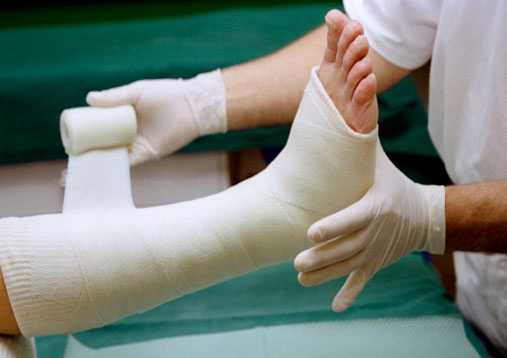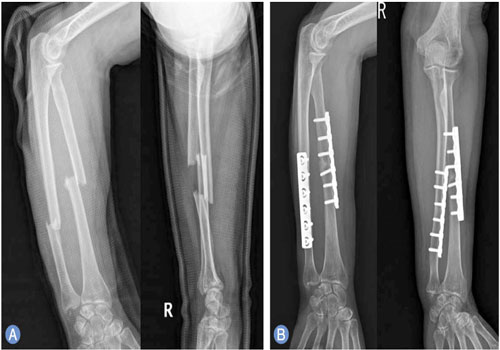
TRAUMA AND FRACTURE TREATMENT
A crack (not only a break) in the bone is also known as a fracture. Fractures can occur in any bone in the body. A bone may be completely fractured or partially fractured.

Ankle fracture and fixation

Hand fracture and fixation
Trauma and Fracture Symptoms
- Symptoms of a fracture or a post-traumatic orthopedic condition can include:
- Swelling, bruising, tenderness, or numbness near the fracture.
- Restricted joint movements.
- Pain.
- The patient cannot move the affected area.
- The affected area may be bent at an unusual angle.
Types of Trauma and Fractures
- Transverse fracture : This type of fracture has a horizontal fracture line.
- Fracture dislocation : A joint becomes dislocated.
- Spiral fracture :At least one part of the bone has been twisted.
- Simple fracture : Bones are fractured without involvement of skin
- Greenstick fracture : The bone partly fractures on one side, but does not break completely.
Causes
- Trauma : A fall, a motor vehicle accident, or while sporting activity.
- Osteoporosis :It weakens the bones leading to fractures.
- Overuse : Repetitive motion has more force on bone resulting in stress fractures. These are common in athletes.
Diagnosis
- X rays.
- CT scan.
- MRI scan.
Treatment
Cast Immobilization
A plaster or fiberglass cast is the most common type of fracture treatment, because most broken bones can heal successfully once they have been repositioned and a cast has been applied to keep the broken ends in proper position while they heal.
Functional Cast or Brace
The cast or brace allows limited or "controlled" movement of nearby joints. This treatment is desirable for some, but not all, fractures.
Traction
It is used to align the bones either in the form of skin or skeletal traction
External Fixation
In this type of operation, metal pins or screws are placed into the broken bone above and below the fracture site. The pins or screws are connected to a metal bar outside the skin. This device is a stabilizing frame that holds the bones in the proper position while they heal.
Open Reduction and Internal Fixation
Open reduction refers to open surgery to set bones with opening the fracture site and fixing them with screws & wires.
Close Reduction and Internal Fixation
Fractures are manipulated and aligned without opening the fracture site and fixing them with intramedullary nails, screws & wires.
Complications
- Bleeding: Mainly long bone and pelvic fractures leading to hypovolemic shock
- Infection : Mainly seen in open fractures.
- Fat Embolism :Mainly in long bone fracture.
- Heals in the Wrong Position : This is known as a malunion; either the fracture heals in the wrong position or it shifts.
- Bone Death (Avascular Necrosis) : If the bone loses its essential supply of blood it may die.

